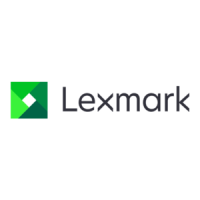Connectivity and network management
183
Unidirectional communication
The Optra W810 supports two unidirectional compatibility modes.
Standard mode
lets the
host computer achieve a maximum throughput of approximately 50KB/second. This
speed limitation is due to the operating system’s print subsystem. The Lexmark printer
drivers for Windows 95/98 can provide rates up to 400KB/second on fast hosts such as
those operating with a Pentium II, 333MHz processor.
In
Fastbytes mode
, the parallel port uses an improved set of timing sequences. This
means that—provided the host computer can drive data out of its parallel port using the
improved timing sequences—data transfers can reach rates of up to 500KB/second. To
realize a data transfer rate improvement when using Fastbytes mode, the host computer
must have a parallel port that supports high-speed data transfer. Check with your com-
puter manufacturer for information about the hardware port capabilities.
Reverse channel modes
The Optra W810 implementation of IEEE 1284 reverse channel mode communications
supports two of the standard 1284 specification modes.
Nibble mode
allows bidirectional
communication on any type of PC parallel port, since it uses the standard four printer out-
put signal lines (Select, Busy, Paper Exception, and Error) normally used for handshaking
and error reporting. During Nibble mode data transfer from the printer to the host, these
four lines become data lines. As there are only four lines, only four bits of data (a
nibble
)
can be sent down at a time. The first four bits of the byte are immediately followed by the
next four to complete the byte transfer. In Nibble mode, either as soon as the
printer-to-host computer transfer has taken place or as soon as the host wants to send
data to the printer, the parallel port returns to unidirectional compatibility (Standard)
mode.
Byte mode
differs from Nibble mode by sending its data back to the host one byte at a
time. It does this by switching the direction of the standard eight data lines on the parallel
port, using them to send the whole byte back to the host at the same time. This increases
the performance over Nibble mode. As with Nibble mode, as soon as the host wants to
send data to the printer, the parallel port returns to unidirectional compatibility (Standard)
mode.
Full bidirectional communication
The actual data transfer in ECP mode is the same as in Byte mode. In addition, the
ECP-supporting parallel port hardware on the host computer provides hardware assis-
tance for data transfer. Rates over 1MB/second have been measured in ECP mode.

